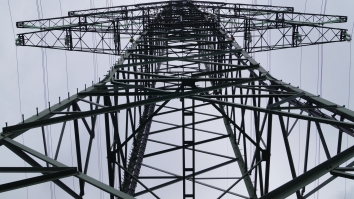What you don't know about solar PV projects in China (Part 1)
By Andrew Nicholls, Carolyn Dong, and Yao ChiChina has one of the largest markets of renewables in the world and possesses rich solar resources. Although China has been initially slow to develop its own solar energy market, the start of 2010 saw this market start to gather momentum.
In January 2013, China raised its solar target for the fourth time in two years to 35GW of solar by 20151. At around the same time, China also announced a 10GW installation goal for 20132.
Government subsidies for solar PV projects in China are granted through special programs, such as the PV Building Demonstration Program, the Golden Sun Program and the Feed-in-Tariff. China is currently changing the present solar Feed-in-Tariff in order to further improve the domestic solar market.
Following the issue of the State Council’s policy on improving the Chinese solar PV industry in July 2013, various central government departments have issued numerous detailed policies in relation to the solar Feed-in-Tariff, tax incentives, development of distributed generation infrastructure and simplifying project approval procedures.
One particular aspect of the recently issued policies which has attracted interest is the fact that the Feed-in-Tariff in the final policy is even higher than the Feed-in-Tariff contemplated in the earlier disclosure draft.
China’s strong government support of its domestic solar downstream market has exceeded the market’s expectation and resulted in increasing attention from both domestic and foreign investors.
This article covers the basics of how solar PV deals are put together in practice in China.
Regulatory framework
The main legislative provisions concerning the Chinese renewable energy industry are the Electricity Act (1996), which sets out the basic regulatory priniciples and framework for the electricity industry; administrative Regulations on the Power Business Permit (2005) this regulation establishes a market-entry system for electricity companies, under which the generation, transmission, distribution and supply of electricity will require separate certificates and approvals; Interim Regulation on the On-grid Tariff (2005) this regulation sets the government approved nation-wide standard on-grid tariff and provides for the gradual introduction of a competition-based market price; Renewable Energy Law (2006) the Renewable Energy Law provides the framework for securing the development of renewable energy in China.
Under the Renewable Energy Law, grid companies must purchase electricity generated by renewable energy plants and are liable for any unpurchased renewable power; Regulations on the Administration of Renewable Power Energy (2006) his regulation sets out the applicable government approval processes and pricing mechanisms for renewable projects; and the Interim Measures on the Pricing of Renewable Power Energy and the Sharing of Relevant Cost (2006) these interim measures set out more detailed rules on the pricing of renewable power and the relevant government subsidies.
In addition to the above, significant policies encouraging the development of the downstream solar market have been released during the second half of 2013, including the Notice of the National Development and Reform Commission on Perfection of Policy Regarding the Feed-in Tariff for Power Generated by Solar PV (2011), this notice sets out the currently applicable Feed-in-Tariff for solar projects.
The current Feed-in-Tariff is expected to be revised later this year (see below); the Relevant Opinion of the State Council for Improving the Healthy Development of Solar PV Industry (15 July 2013) which is the most recent high-level policy dealing with improving the solar PV industry in China.
It identifies problems with the current Feed-in-Tariff and provides for the revision of the current Feed-in-Tariff to better develop the Chinese solar industry. More detailed rules are expected to be promulgated in accordance with this opinion later on in this year.
The Notice of the Ministry of Finance regarding the Subsidies to Distributed Solar PV Power Generation according to the Quantity of Power (24 July 2013); and the Notice of the National Energy Administration on Carrying out the Establishment of Demonstration Areas for Distributed Solar PV Power Generation, 20 August 2013. In addition to these we have also seen other policies introduced which also seek to encourage the development of solar PV in China.
Regulatory authorities and approvals process
Regulatory Authorities
All solar PV projects (whether domestic or foreign) will require approval from the National Development and Reform Commission and/or its competent local counterparts (the "NDRC"). The NRDC is China's national authority for accepting and approving all fixed-asset investment projects including renewable projects and the National Energy Administration (the "NEA") is the department within the NDRC primarily in charge of energy related projects.
Before applying for final NDRC approval, the relevant approvals will need to be obtained from the following bodies (note this is not an exhaustive list), including:
• Ministry of Land and Resources (MOLAR) - MOLAR are responsible for approving the land-use rights for all projects
• Ministry of Environmental Protection (MEP) - MEP is responsible for approving the project's environmental impact assessment reports
• Ministry of Water Resources (MWR) - MWR is responsible for approving the project's soil and water
conservation plan
• State Administration of Culture Heritage (SACH) - SACH is responsible for reviewing the project’s impact on cultural heritage
• Ministry of Finance (MOF) - MOF is the government authority which assesses and approves any government subsidies for a renewable project
• Grid companies - the grid companies are not government authorities but they determine whether the intended power project can connect to the grid
Depending on the nature of a specific project, additional departments such as the Ministry of Housing and Urban-Rural Development (MOHURD) and the Ministry of Health (MOH) etc, might be involved. For foreign-invested projects, approval from the Ministry of Commerce (MOFCOM) will also need to be obtained after the project has received final NDRC approval (see section on foreign investment approval below).
Project Approvals Process
The typical project approvals process is set out below:
1. NRDC Preliminary Opinion/Approval
The approval process starts with obtaining the NDRC's preliminary opinion on the proposed solar PV project.
2. Relevant Regulatory Authority Approval
After obtaining NRDC's preliminary opinion, the necessary approvals are then obtained from the other relevant bodies, eg MOF and MOLAR (as set out above).
3. Final NRDC Approval
After obtaining all the necessary approvals from the various bodies, NRDC then gives their final and formal project approval.
The NRDC formal approval documentation will set out all the important details of the approved solar PV project. It will include details of the approved location of the project; term of operation of the project; the project's capacity; on-grid price; and any government subsidy.
Additional MOFCOM approval is required for foreign-invested solar projects only, in order to establish the project company3. MOFCOM approval is generally obtained after NRDC's final project approval and in approving a foreign-invested solar project, MOFCOM will consider whether their industrial policies are carried out, there are benefits for economic development; and the measures for protecting the environment and state interests are implemented.
______________
1National Energy Administration's (NEA) China, Announcement , available on www.nea.gov.cn
2National Energy Administration's (NEA) China, Announcement , available on www.nea.gov.cn
3NRDC and MOFCOM, Catalogue for the Guidance of Foreign Investment Industries (Amended in 2011)
























 Advertise
Advertise







